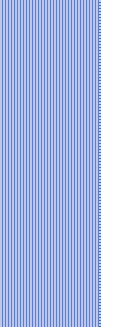

Inductive-filtersNow let's look at inductors and their application in filter circuits. Remember, AN INDUCTOR OPPOSES ANY CHANGE IN CURRENT. In case you have forgotten, a change in current through an inductor produces a changing electromagnetic field. The changing field, in turn, cuts the windings of the wire in the inductor and thereby produces a counterelectromotive force (cemf). It is the cemf that opposes the change in circuit current. Opposition to a change in current at a given frequency is called inductive reactance (XL) and is measured in ohms. The inductive reactance (XL) of an inductor is determined by the applied frequency and the inductance of the inductor. Mathematically,XL = 2 pi fL From the preceding formula, you know that if either frequency or inductance is increased, the XL will increase. Since inductors are placed in series with the load (illustrated below), the larger the XL, the larger the ac voltage developed across the inductor and the smaller the ac voltage developed across the load.
Voltage drops in an inductive filter.
Now back to our circuit. As illustrated in the next illustration below, when the current starts to flow through the coil, an expanding magnetic field builds up around the inductor. This magnetic field around the coil develops the cemf that opposes the change in current.
Inductive filter (expanding field).
When the rectifier current decreases as shown in the following illustration, the magnetic field collapses and again cuts the turns (windings) of wire, thus inducing current into the coil. This additional current adds to the rectifier current and attempts to keep it at its original level.
Inductive filter (collapsing field).
Now that you have learned how the components in the filter circuits react to current flow from the rectifier, the tutorials to follow will explain the operation of various filters in use today. (back)
(top)
(next)
(return to power supplies page)
|
Subscribe
Become a loyal member to our site. It's Free!
Site Search


Ask an Expert
Have a question about something not covered in the content of this site and want an expert answer? Just type your question in the box and submit.
Translate your page
If English is not your first language you can Translate the text on this page to any one of the languages found in the drop down menu. Select your language from the list for an instant translation.
Amazon Search
Looking for something unique for your project?
Related Pages
Become a certified solder technician
Become an Electronics Technician
Convert most anything with this utility
Find your wire and cable here!
Sponsored Sites


You are the
unique visitor to this site.
Around the World!
Let's see where people are learning about electronics today.
Like what you have seen so far? Help keep this site fresh! Donations are welcome.



















































































